F.P. Journe and Only Watch: when excellence does good
6 May 2024
The story that ties François-Paul Journe to Only Watch is a long one. As you may recall, Only Watch is the biennial charity auction in which the greatest watchmaking brands take part, creating unique pieces especially for this event.
The auction was established in 2005 by Luc Pettavino. Under the patronage of Prince Albert II of Monaco, it aims to raise funds for Duchenne muscular dystrophy research by auctioning off unique watches. Duchenne muscular dystrophy is a genetic disease that affects 1 in 3,500 boys, including Luc and Monique’s son Paul, whose diagnosis was the impetus behind the project.
Since 2005, thanks to the increasing mobilisation of the watch industry and the support of an entire ecosystem, this initiative has become a much-awaited biennial event for brands and collectors alike. The auction has enabled the charity behind Only Watch – the Association Monégasque contre les Myopathies – to raise almost100 million francs, which were invested in financing significant scientific and medical advances.

François-Paul Journe has taken part in Only Watch since 2015 and, for his five appearances including this year’s, he has created extraordinary watches that are worth remembering. The master has put a great deal of his horological expertise into each one of them, ensuring that they become not only highly coveted during the auction, but also pieces capable of making a name for themselves beyond Only Watch.
As a demonstration of how much the master takes Luc Pettavino’s initiative to heart, for the watch dedicated to Only Watch 2024, the Chronomètre Furtif Bleu, he decided to make the dial in Grand Feu enamel, with a special treatment giving it a mirror effect. As for the unique pieces created for Only Watch, there are two distinct elements compared to 2017: the blue colour of the dial, but also of the tantalum case, and a touch of orange.
ONLY WATCH 2015: TOURBILLON SOUVERAIN BLEU
F.P. Journe’s relation with the auction began in 2015. For the occasion, the brand played it safe by proposing one of its most famous watches with timeless appeal, the Tourbillon Souverain, in the Tourbillon Souverain Bleu version. A model that is now part of Journe’s DNA and which, in its Only Watch version, climbed onto the podium of the most expensive.
In fact, during the 2015 auction it fetched 550,000 Swiss francs – that is four times the price of the Tourbillon Souverain in platinum. The only ones that did better were the Patek Philippe Grand Complication Ref. 5016A-010 in steel (7,300,000 francs) and the Richard Mille RM 27-02 Raphael Nadal, which was estimated at 600,000-700,000 francs and fetched 650,000 francs.
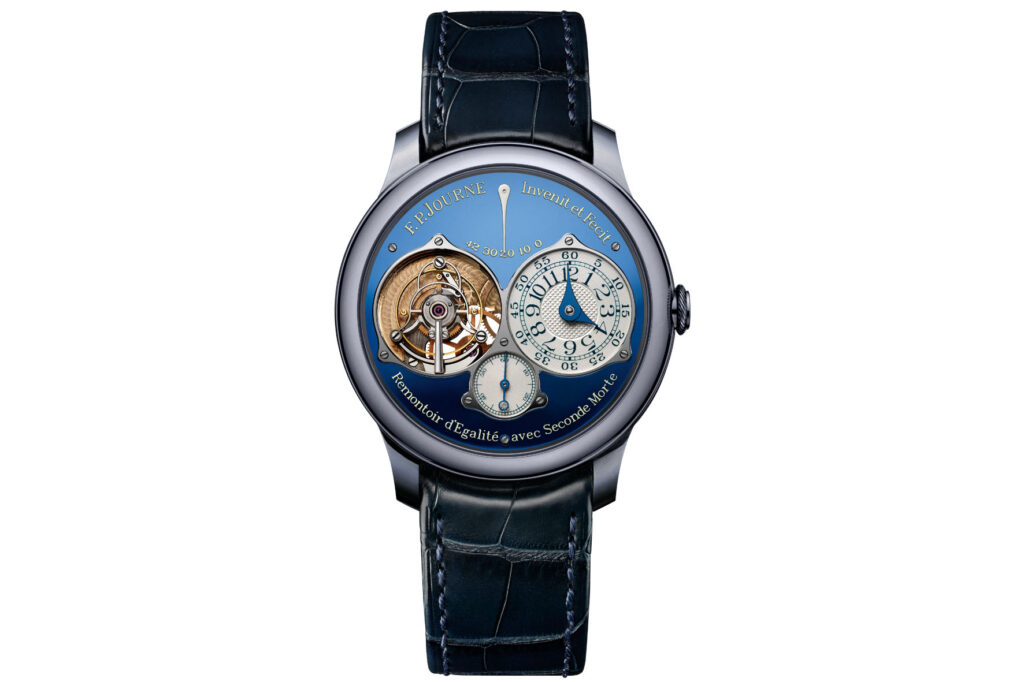
We have already written about the Tourbillon Souverain in the past, both in its Régence version and as the refined Tourbillon Souverain Vertical. There is not much more to say that has not been said in our previous articles. The novelty is that, for his first participation in Only Watch, François-Paul Journe opted for an unusual material: tantalum.
It was in fact the first time a tourbillon was seen housed in a case made entirely of tantalum. A metal named after the mythological king Tantalus and his torment: chained to a tree full of fruit near a spring, every time he tried to pick a fruit or attempted to drink, everything moved away from him. As tantalum is very difficult to work with, the risk is to ruin everything when you think you have the end result at hand.
Characteristic of the Tourbillon Souverain Bleu was the extraordinary blue chrome dial, reflecting like a mirror, and whose colour changed depending on how it was illuminated. The calibre created by F.P. Journe was in 18K rose gold, equipped with the famous remontoir d’égalité and the so-called deadbeat seconds.
The remontoir d’égalité is a system created to obtain a constant force. Every second, it takes the same amount of energy from the barrel spring, which is more or less powerful depending on whether it is wound or discharged. The deadbeat seconds are connected to the remontoir d’égalité and allow the seconds hand to stop for the duration of each second, thus indicating the second as soon as the previous one has elapsed.
ONLY WATCH 2017: CHRONOGRAPHE MONOPOUSSOIR RATTRAPANTE BLEU
2017 was the year of the Chronographe Monopoussoir Rattrapante Bleu, an entirely new watch created especially for the auction. Again, the 44 mm in diameter and 11.5 mm thick case was developed entirely in tantalum exclusively for Only Watch, as that size never existed in the collection before. The push-button and crown were also made of tantalum.
The blue chrome dial was also unique, as it was developed especially for Only Watch. It featured an orange tachymeter scale to measure the distance travelled in kilometres and a yellow telemetric scale to measure the distance travelled by sound. The stylised numerals were new, accompanied by blued steel hands and two silvered counters: the small seconds at 9 o’clock, and the 30-minute chronograph at 3 o’clock.
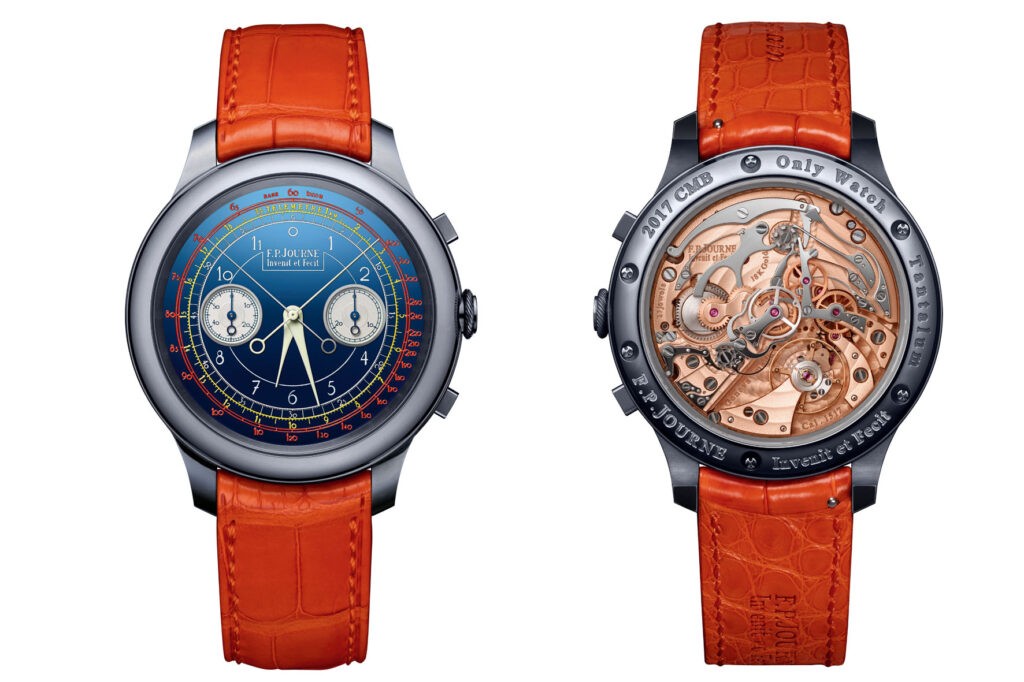
Its F.P. Journe 1517 ‘Chronographe Monopoussoir Rattrapante’ calibre with 18K rose gold column wheel, inspired by traditional chronographs and developed exclusively for the auction, was distinguished by circular côtes finishes on the bridges, a partially circular-grained plate, polished screw heads and pivots with polished rounded ends. Even then, the price at which the watch was sold was exceptional: 1,150,000 francs.
“I am delighted that our watch fetched such a high price for charity. I have been totally involved in this unique creation that has raised a considerable sum of money for the Monegasque Association for Duchenne Muscular Dystrophy Research’, was François-Paul Journe’s comment.”
ONLY WATCH 2019: F.P. JOURNE ASTRONOMIC BLEU
2019 featured the Astronomic Bleu, also with a tantalum case and enriched with the finest complications. Tourbillon and minute repeater, equation of time, sidereal time, sunrise and sunset display, moon phases, second time zone and annual calendar made it one of the most complex watches ever designed by François-Paul Journe.
As the master himself recalled, the design was inspired by a teenager’s drawing, found inside a wastepaper basket. A sketch made years earlier by François-Paul Journe’s son, Charles, who, after drawing it, had thrown it away thinking that it was not appropriate for the family creations. Yet his father saw good ideas in it and started a six-year research on the watch, after which he finally returned to the drawing board.
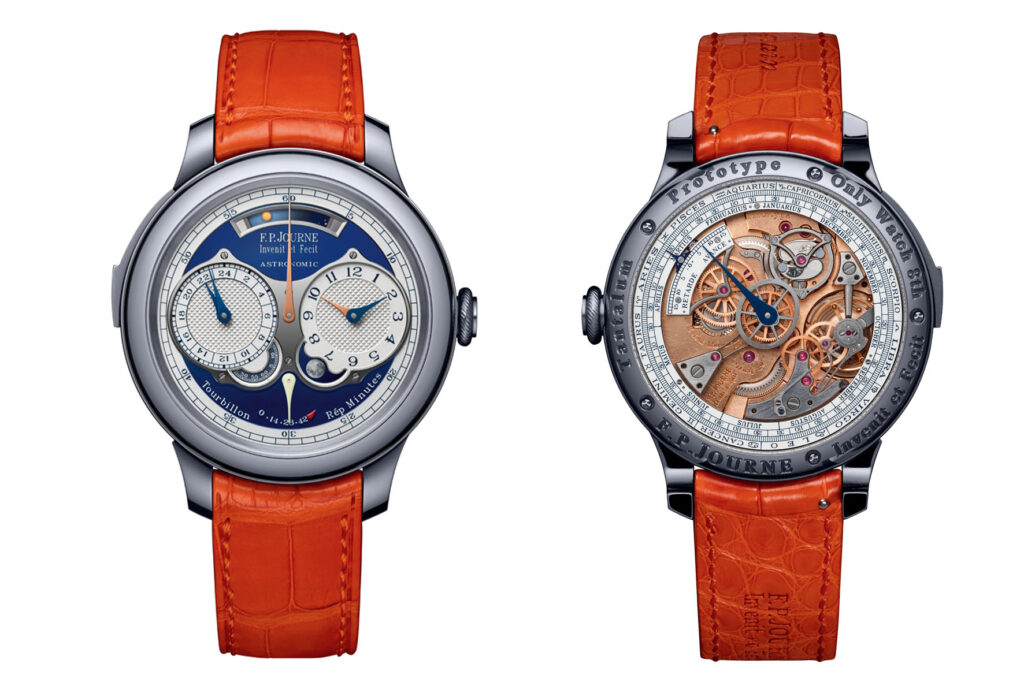
He was inspired by one of his earlier creations, a pocket watch with planetarium made in 1987 for a collector of scientific objects. That tourbillon watch indicated mean time and sidereal time, as well as the equation of time, had a full calendar and a power reserve. Starting from there, Journe projected himself into the future and created the piece for Only Watch, with a totally new 18K rose gold movement. A movement that was in fact a prototype: the working movement of François-Paul Journe in its ‘raw’ state, without finishing.
The dial was chrome blue, as on previous watches created for Only Watch, with counters embellished with the Clou de Paris decoration and the phases of the moon, expressed by a hyper-realist moon taken from a Nasa photograph. At 3 o’clock was the mean or civil time dial, with a blue hand indicating a second time zone.
At 9 o’clock was the sidereal time dial and, next to it, the middle seconds were displayed on a disc. Between the two stood the central minutes and the power reserve indicator, up to 40 hours, and a blue aperture showing sunrise and sunset. In addition to all this, the watch also chimed the hours, quarters and minutes, and had 18 functions – all of which could be set from the crown. Final price? The highest ever fetched at the time for a watch by François-Paul Journe: 1,800,000 francs.
ONLY WATCH 2021: F.P. JOURNE FFC BLEU
2021 perhaps brought the most astonishing piece ever created by the master, and not only for Only Watch. In fact, the F.P. Journe × Francis Ford Coppola FFC Blue left everyone open-mouthed because it was an automaton, even if it was presented in its prototype form. In that case, too, there was a tantalum case and a newly created movement, the FFC 1300.3 automatic calibre.
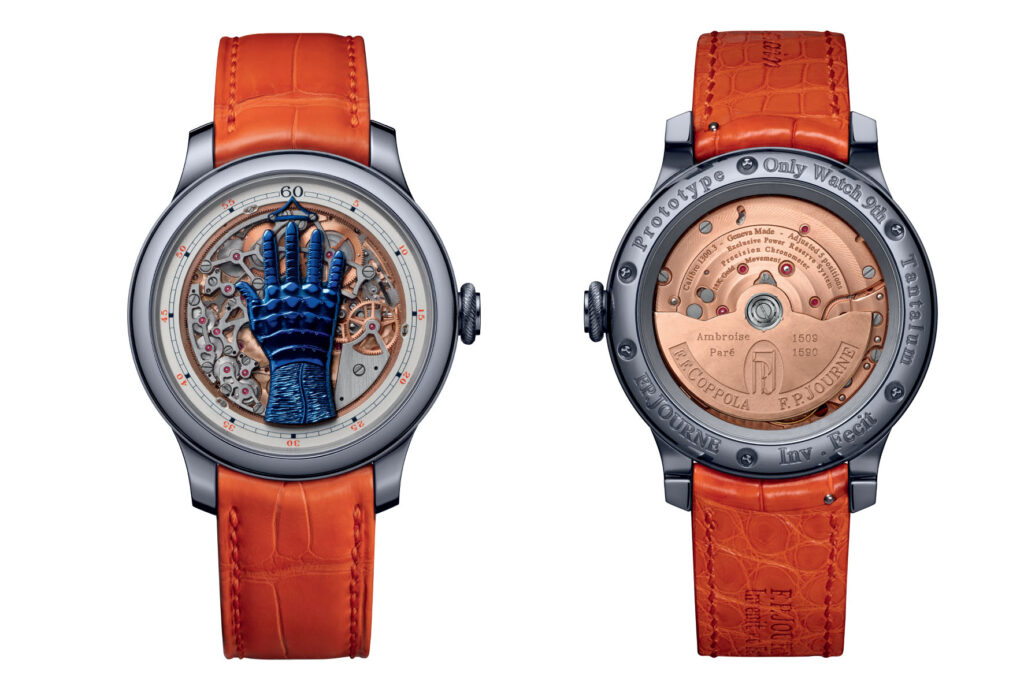
On the watch, the minute circle rotated and the minutes were marked by an index fixed at 12 o’clock. At the centre of the dial was a large blue hand, whose movable fingers appeared or disappeared instantly to indicate the time according to their position. These were not hands, but actual fingers of a mechanical hand, created in the 16th century by Ambroise Paré, the father of modern surgery who paved the way for various surgical techniques and treatments on the battlefield.
Built in 1551, ‘Le Petit Lorrain’, as Paré’s hand was known, relied on levers and springs to imitate the movements of a real hand. It is said to have been worn in battle by a French cavalry captain, who even reported being able to use it to grip the reins of his horse.
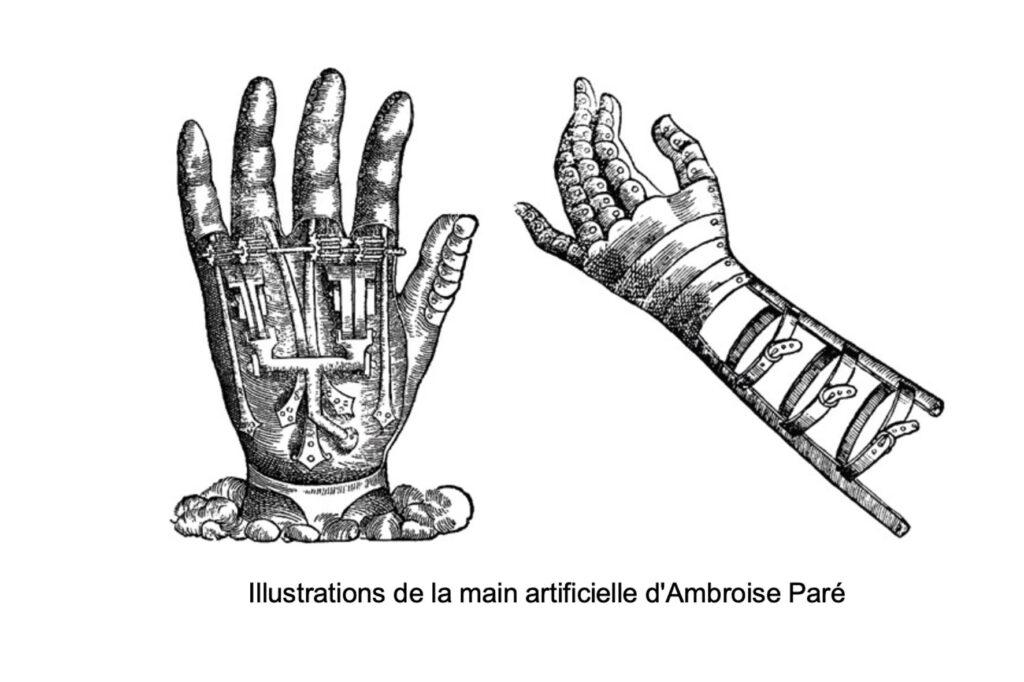
The five fingers on the dial extended and retracted to indicate the hours from 1 to 12 o’clock. Theoretically, it would have been possible to display up to 32 different digits on a single hand (five fingers extended or retracted, thus five binary digits, imply 25 or 32 combinations), so it would have been possible to indicate all 24 hours. However, that would have been too complicated to implement and impractical to read, as you would have had to remember 24 different finger combinations, so François-Paul Journe opted for a 12-hour display that would be repeated twice a day.

Also for the F.P. Journe × Francis Ford Coppola FFC Blue, the tantalum case and movement were created from scratch. In that case too, the final auction price was mind boggling: 4,500,000 francs.
ONLY WATCH 2024: CHRONOMÈTRE FURTIF BLEU
And here comes 2024, with the unique piece for the 5 May auction being the Chronomètre Furtif Bleu. It is a watch built around the LineSport concept, with a 42 mm case and bracelet made entirely of sandblasted and polished tantalum, a world first for the brand[BN1] . The slim 9.5 mm case, in a dark blue-grey colour, houses a new blue dial, which at first glance might look like that of the Chronomètre Bleu, but is actually made using a different technique.
This is where the name Furtif comes from, as the Grand Feu enamel dial makes it a difficult, almost secret, enterprise to read the time if the timepiece is not facing the viewer, as the blue dial only reveals the numerals when reflected in the light: they are matt laser-engraved into the enamel surface. Time is indicated by the blue hour and minute hands, with only the seconds hand contrasting with a bright orange hue, yet another classic Journe design element.
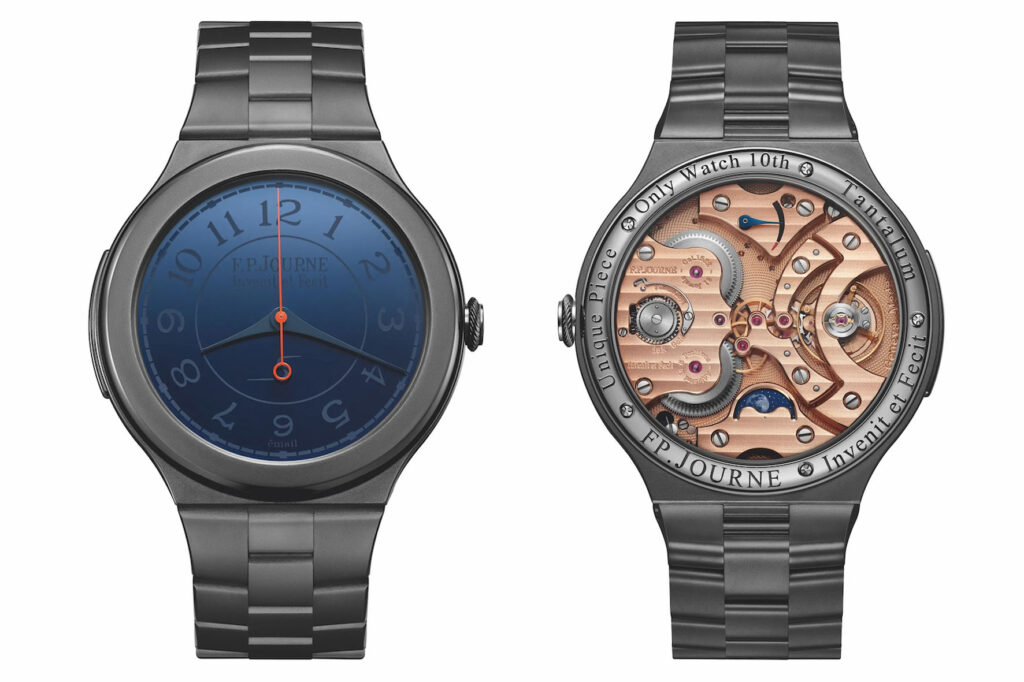
The back of the Chronomètre Furtif Bleu is much less… furtif. It reveals the newly developed Calibre 1522, with some additional complications that only the wearer can enjoy: a power-reserve indicator and a moon phase.
This movement, with plates and bridges crafted in 18K rose gold, features the Chronomètre Souverain’s classic double-barrel architecture; the right side features a new construction for the regulating organ; the balance is held under a more stable transversal bridge while it is connected to the direct central seconds. This new movement has a power reserve of 56 hours.
The organisers expect a final price of between 200,000 and 400,000 francs, but we are pretty sure that it will come close to the prices of previous editions. Except, probably, that of 2021, which is definitely unattainable.
As much as the Chronomètre Furtif Bleu may seem a more ‘immediate’ watch than previous editions, it remains an extremely complex and sought-after timepiece. If we add to this the signature of master watchmaker François-Paul Journe, an auction price with several zeros is more than certain.
By Davide Passoni
